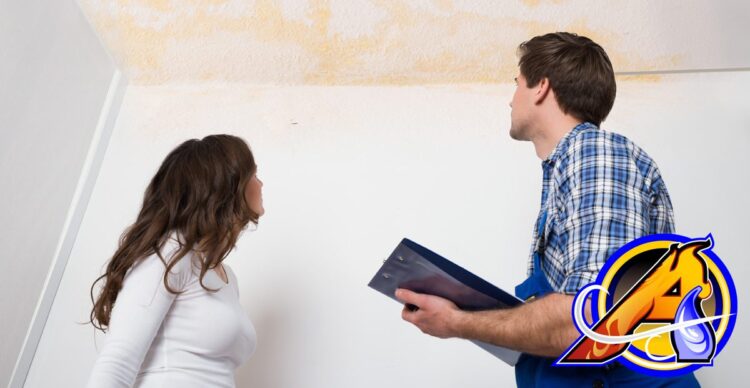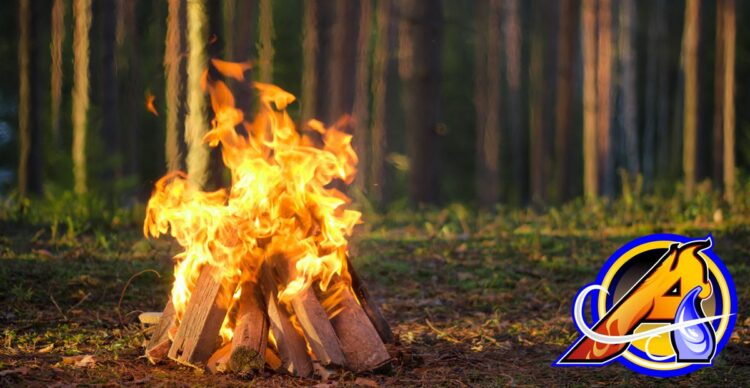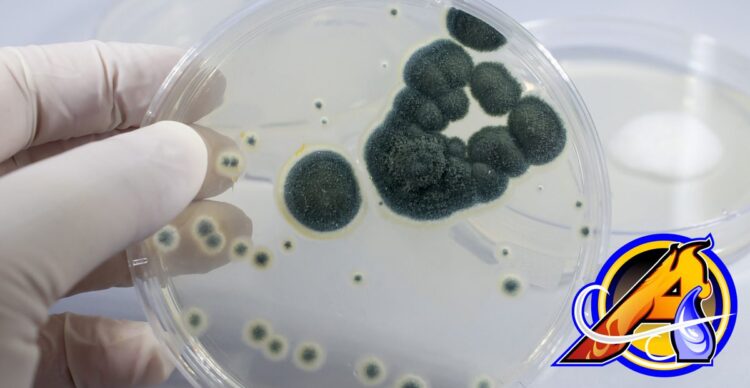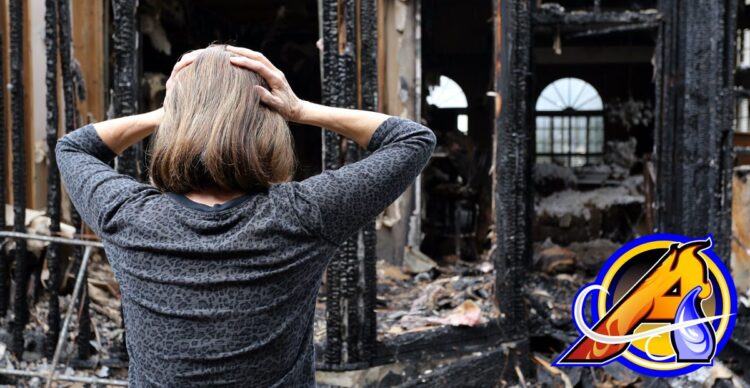Every homeowner knows that seeing a brown water spots on a ceiling is never a good thing. When the unsightly stain “magically” appears, it can bring along with it a sense of dread. Seeing a stain on the ceiling means there’s water where it isn’t supposed to be. Don’t Ignore It Once a water spot appears on a ceiling, it’s time to act. Ignoring a stain will not make it disappear. It’s essential and in your best interest to find the source to stop further damage. Allowing water or moisture to invade your ceiling will cause irreparable damage, forcing you to tear out the damaged section. The longer you ignore the water spot, the more costly it will become to fix it. Causes of Unwanted Water Water spots on ceilings can come from several sources. Plumbing leaks are a significant cause. It could be a radiator, an upstairs bathroom, or
Learn More Now! →It’s winter and nobody likes frozen pipes! This chilly season affects us all, but for those of us in areas where snowfall and freezing temperatures are common, it’s a tricky period to maintain our home. This is because cold weather can cause our pipes to freeze and potentially burst due to the extra pressure created. So, how do we prevent our water pipes from freezing during the winter months? This blog by Allied Restoration will explain exactly that, as well as how to recognize when your pipes are freezing. We’ll also cover what to do if they do freeze, so you and your family can have a safe winter without any damage to your home. Signs That Your Pipes Are Freezing The good news is that your pipes will likely give you some signs that they are either in the process of freezing or have frozen! Keep a lookout for
Learn More Now! →Insulating your attic is an essential part of maintaining your home. The Department of Energy has estimated that home heating bills are reduced by 10 to 50 percent when insulation is properly installed. So, it’s a no-brainer that homeowners across the country ensure that their home has the proper attic insulation. Especially important in the cooler months. However, is your insulation safe? As we learn more about materials and their properties, it’s essential to understand the dangers. We need to look at commonly used materials used in the past. This blog will explore what attic insulation is safe and unsafe. What is Attic Insulation? Firstly, attic insulation is a necessary way to retain heat inside your home. It works by preventing inside air from escaping to the outside. Also to prevent from outside air coming in. It’s effective in helping reduce energy costs. The cost of heating and cooling your
Learn More Now! →We can enjoy fire pits and bonfires most months in Maryland. There is a unique ambiance provided that is hard to beat. But the heat, and flames can pose real dangers to your family and home. Firepit and Bonfire Safety is a priority before you pull out the marshmallows and get cozy near the fire. Find the Perfect Spot Firepit and Bonfire Safety with the location. Bonfires are usually more enormous and more challenging to control because they aren’t in a confined pit like a fire pit is. Of course, large gatherings and celebrations lend themselves exceptionally well to bonfires. With the intense heat generated by a bonfire, you should set it up at least 50 feet from any building. On the other hand, fire pits can be as close as 10 feet from a building, with 25 feet being the optimal length away from any structure, including fences. Avoid
Learn More Now! →Candles are great any time of the year. They offer mood lighting and ambiance and come in great scents that make candles a mainstay in many Maryland homes. We wanted to point out some safe alternatives to candles. But the downside to candles is their ability to start fires. Home candle fires are most common in December. They are caused most often by combustible materials left too close to the open flame. Candles cause more than $200 million in property damage per year in preventable fires. If you love the ambiance of holiday candles but don’t want to risk a house fire, consider these safer alternatives this holiday season. Flameless LED candles Flameless candles have come a long way over the years. They look like real candles but don’t have the danger an open flame brings. You can get flameless LED candles in all shapes, sizes, and styles, including tea
Learn More Now! →Is is difficult to remove kill mold and a challenge for any homeowner. Some molds are highly toxic, some are indicative of intense dampness in the home, but all molds are unsightly. You should remove them as soon as possible. Mold can also destroy the surfaces it grows on. It can lead to structural damage of the home and potentially cause health problems for people who suffer from respiratory issues or weakened immune systems. Many homeowners turn to bleach to help get rid of mold, but is this an effective method? This blog will explore whether bleach can get rid of mold, the risks associated with this removal, and whether there are better alternatives to this type of removal. How Does Bleach Kill Mold? Bleach can kill mold, but only on certain surfaces. It only works effectively on nonporous surfaces, like tiles and sinks. This means that any mold growing on
Learn More Now! →Common Mold Spores Do you have mold spores in your home? Are you certain? Mold spores can be a common yet dreaded feature in our homes. They usually require sufficient moisture and a food source to grow and thrive and can also be referred to as mildew. While it can be stressful to have a mold spores growth in your home, it might not always need to cause concern. This blog will outline the most common mold spores found in homes. Before we begin the blog, it’s essential to highlight the three categories that mold falls into: Allergenic – the mold isn’t toxic but can trigger allergic reactions like asthma. Pathogenic – the mold can trigger illnesses in immune-deficient people. Toxigenic – the mold is dangerous, creates its own toxins, and is sometimes lethal. Chaetomium This allergenic mold type is typically present in water-damaged homes. It is the most common
Learn More Now! →The role of demolition in restoration is crucial to rebuilding your home. While homeowners can do some demolition, more extensive demolition should be left to the professionals. Especially when it includes structural parts of the house. Once your home has been damaged by a water, or fire the restoration process can be a lengthy one. You may have prepped your home and still had damage occur that requires restoration. The professionals at Allied Restoration in Gambrills, Maryland, are certified and licensed to perform all aspects of the restoration process. If you need restoration services after the damage has occurred to your home, call us 24/7 at 410-BUILDER to get a free estimate. What Can You Do to Limit the Damage? After a large storm has rolled through, the first thing you should do is survey the damage. Maybe some roof shingles have come loose or were blown off during the
Learn More Now! →Some people may be unaware that mold is lurking in air conditioning system. Mold that is left to grow will eventually release spores, which can easily travel around your home, where your family will inhale them. This can cause respiratory infections, allergy symptoms, skin irritation, and other health problems. People who are allergic to mold and immuno-compromised can experience even more severe reactions. The Dangers of Mold? Mold in your air conditioning system can allow spores to spread throughout your home more easily. As the cold air travels through the ducts, spores can attach to the ductwork, growing more mold. Over time, mold spores concentrate and replicate, which can cause spores to spread to every room in your home. You and your family could be inhaling mold spores during the day and while sleeping without even realizing it. How Does Mold Grow in Your Air Conditioning System? Mold spores are
Learn More Now! →We tend to think of our home as our refuge. Our safe place to live, rest, and relax. So, it can be one of the most devastating life events when house fires occur. One of the best ways to prevent a house fire is to know what potential dangers may be around your home. Identifying these dangers can help you keep your property and family safe before it’s too late. Number One Cause of House Fires; Cooking The number one cause of house fires is cooking, according to the U.S. Fire Administration (USFA). Most residential fires start in the kitchen. They are usually due to unattended cooking, especially when using grease or oil on a stovetop. Once a grease fire has started, it can be quite difficult to extinguish. Some helpful tips when cooking: Always stay in the kitchen when conducting heat source cooking Keep flammables such as dish towels,
Learn More Now! →









